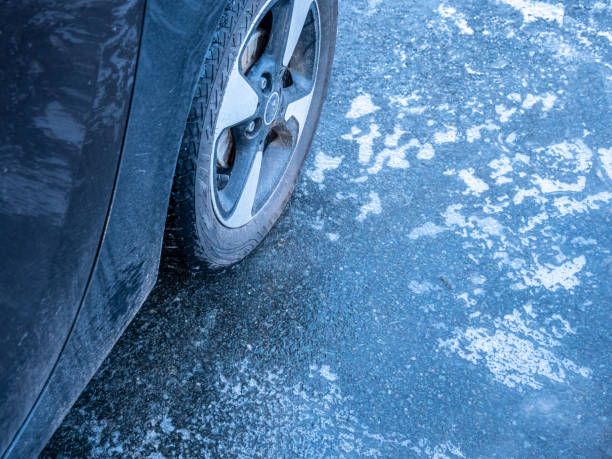As the Southeast and much of the country continue to experience a cold snap, David Martin from the Road Safety Authority (RSA) is urging people to exercise caution when on the roads.
Speaking on Morning Mix Mr Martin said, “The cold weather is still with us, and we’re dealing with very treacherous traveling conditions, if possible, it’s best to delay your journey until road conditions improve, which is expected over the coming days. If travel is necessary, treat every road as if it’s covered with black ice and drive with extreme caution.”
Roads that appear to be gritted may still present dangers. “The gritting operations are ongoing, but the ice can still persist, especially in sheltered areas like under trees or near high walls. Drivers should be vigilant and drive slowly.”
For those who must travel, David shared several important tips for navigating icy roads safely:
- Accelerate Gently – Avoid harsh acceleration, which can lead to wheel spin. Instead, try to stay in a higher gear and use gentle pressure on the accelerator.
- Avoid Braking Abruptly – Sudden braking can cause skidding. Instead of using the brake, try downshifting to reduce speed. If braking is necessary, apply light pressure to alert drivers behind you.
- Watch for Black Ice – Black ice is often invisible and can be found on sheltered roads. Drivers should watch the vehicle ahead, as it may provide clues about where the ice is.
- Stay Calm if You Hit Black Ice – If you encounter black ice, keep calm, avoid sudden movements, and steer straight. Let the vehicle pass over the ice naturally without hitting the brakes.
During freezing conditions, emergency services are stretched thin, and David Martin advises reducing strain on these services. “Only travel if your journey is essential. If you must drive, ensure your vehicle is equipped with essentials like a high-visibility jacket, a shovel, extra clothing, and fully charged mobile phones.”
Mr. Martin also recommends checking the condition of your tires before setting out. “Make sure your tires are properly inflated and have sufficient tread depth—at least 1.6 millimeters.”
While main roads are being gritted, cyclists and pedestrians face particular risks. “Many cycle routes are not gritted, so cyclists should exercise extreme caution. Similarly, footpaths can be very slippery, and walkers should be mindful of the conditions underfoot.”
For individuals and communities preparing for extended periods of icy weather, David Martin emphasizes the importance of preparation. “Ensure your windscreen is clear of ice before setting off. A scraper and de-icer should always be in your car, and if you drive a rear-wheel-drive vehicle, adding weight to the boot, such as a bag of sand or cement, can help with grip.”
For electric car owners, Mr Martin offers additional advice. “Many electric cars are quick to accelerate, but they can be harder to control on icy surfaces. If your vehicle has an eco mode, use it to reduce acceleration power and make the car easier to manage in these conditions.”
For more information on safe travel during icy conditions, visit the RSA website at RSA.ie. There, you can find more tips on how to stay safe on the roads and reduce risks during freezing weather.


